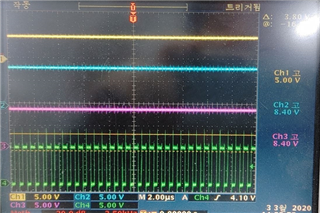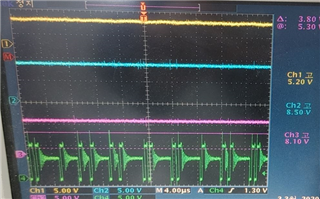Other Parts Discussed in Thread: BQ25881
Hello TI experts,
my customer uses BQ25881 for their new product, they made DVT PCB for test.
here is some problems;
they made 100 PCBs, 3 of them do not working correctly.
- charging does not start after the power is on.
- STAT pin is blinking 1Hz period. <- i think this signal means fault status of charger.
- SW pin is different between normal IC and suspected IC.


(the green is SW pin waveform ; left is normal IC, right is suspected IC)
yellow-VBUS, skyblue-VSYS, violet-VBAT
also V_REGN is little different. (normal; 5.00V / suspected; 8.1V)
now I only understand that the charger is under fault situation. could you give me some advice about this?
(they tested A-B-A swap test. the symptom follows the suspected IC.)
Best regards,
Chase

